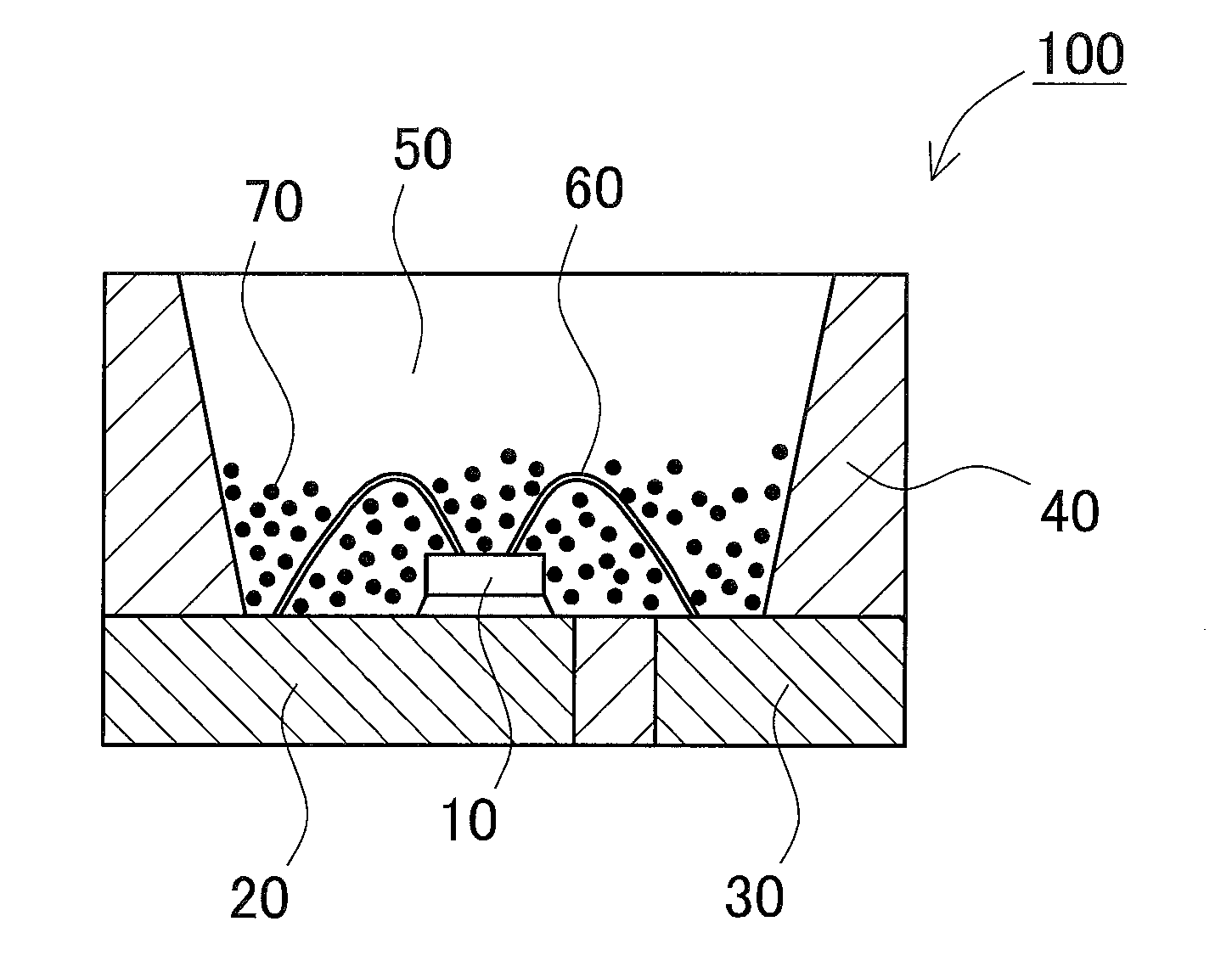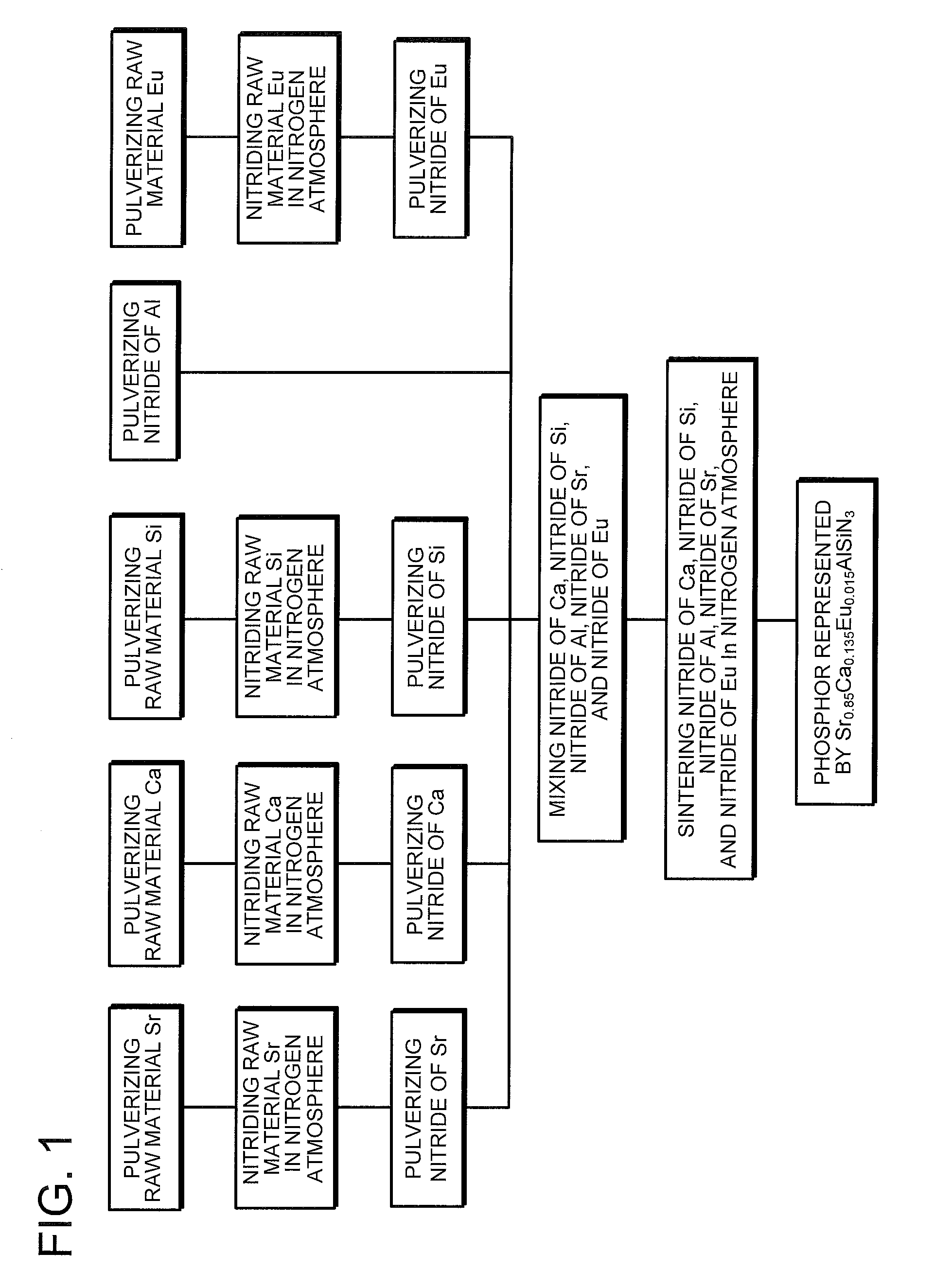Phosphor and light emitting device using the same
a technology of light emitting device and phosphor, which is applied in the direction of semiconductor devices, thin material processing, luminescent compositions, etc., can solve the problems that scasn phosphor cannot be produced in substantial quantities, and achieve the effect of reducing color rendering properties, reducing luminous flux, and increasing luminan
- Summary
- Abstract
- Description
- Claims
- Application Information
AI Technical Summary
Benefits of technology
Problems solved by technology
Method used
Image
Examples
examples 11-16
, Comparative Examples 11-12
[0097]As described above, it can be expected that a reduction in the half value width of the emission spectrum of a SCASN phosphor can lead an increase in the luminous flux of the light emitting device which employs the phosphor. In order to confirm the above, the phosphors manufactured as described in Comparative Examples 1, 2 and Examples 1 to 6 were respectively combined with an LED which is a semiconductor light emitting element, to fabricate respective light emitting devices which can emit a white mixed color light, and the properties of the light emitting devices were evaluated. For the light emitting device, an LED to emit blue light having an emission peak wavelength of 455 nm and Y3(Al, Ga)5O12:Ce are used in combination. The chromaticity (x, y) and the average color rendering index (Ra) of the light emitting devices are shown in Table 3. As shown in Table 3, the luminous flux value of Comparative Example 11 is set to 100% as reference, the lumin...
examples 17-20
, Comparative Examples 13-16
[0100]In the examples shown above, a case in which one kind of phosphor is combined with an LED to obtain a light emitting device is illustrated, but the present embodiment of the disclosure is not limited thereto, two or more kinds of phosphors can be combined with the LED. In such a case, a first phosphor having a first emission spectrum and a second phosphor having a second emission spectrum which is different from that of the first emission spectrum is preferably combined. With this arrangement, a light emitting device of high flux can be obtained.
[0101]Such examples are made as Examples 17 to 20, and the luminous flux ratio, the chromaticity, and the average color rendering index were measured, and the results are shown in Table 4. The emission spectrum of each of the light emitting device is shown in FIG. 10 to FIG. 13 respectively. In the examples, as the second phosphor to be combined, the phosphors to emit green light: Ca8MgSi4O16Cl2:Eu (Example ...
PUM
| Property | Measurement | Unit |
|---|---|---|
| emission peak wavelength | aaaaa | aaaaa |
| reflectance | aaaaa | aaaaa |
| half width | aaaaa | aaaaa |
Abstract
Description
Claims
Application Information
 Login to View More
Login to View More - R&D
- Intellectual Property
- Life Sciences
- Materials
- Tech Scout
- Unparalleled Data Quality
- Higher Quality Content
- 60% Fewer Hallucinations
Browse by: Latest US Patents, China's latest patents, Technical Efficacy Thesaurus, Application Domain, Technology Topic, Popular Technical Reports.
© 2025 PatSnap. All rights reserved.Legal|Privacy policy|Modern Slavery Act Transparency Statement|Sitemap|About US| Contact US: help@patsnap.com



